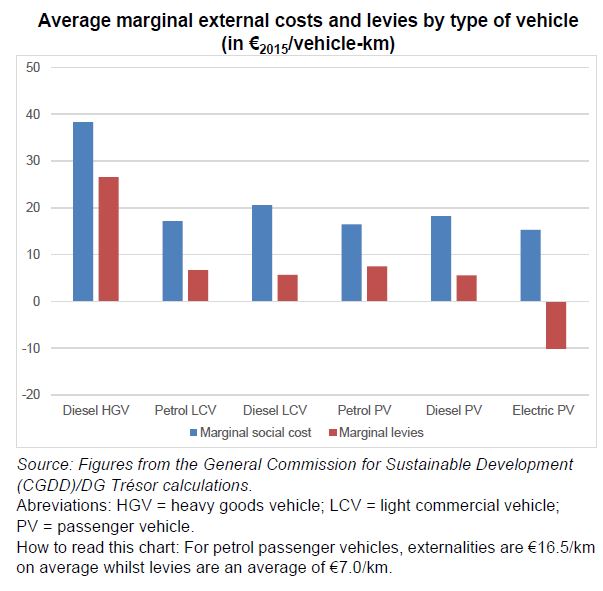Do road users pay a fair price for their journeys?
This article details the externalities and charges on road traffic and finds that road use, excluding toll motorways and petrol vehicles in rural areas, is generally under-priced. A better coverage of the external costs of road transport would require a reduction of its externalities and a more adapted pricing, in particular in urban areas and on national roads, where cost coverage is particularly low.
Road users create costs for other users (wear and tear to roads, congestion, accidents) and for the community as a whole (air pollution, greenhouse gas emissions, noise). Economic theory posits that road users should ideally pay the costs – known as externalities – which are generated for the community by their decision to drive. The levies paid by users are essentially taxes on fuel and tolls. When these levies account for less than the externalities, there is excessive road traffic compared to the ideal situation.
In 2015, levies only covered, on average, one third of traffic-related externalities. This under-charging relates to the vast majority of the vehicles and environments that were studied. It is especially pronounced in urban areas where costs connected with traffic jams and air pollution are higher. Diesel vehicles have a worse profile than petrol vehicles as they emit more pollutants and are subject to lighter taxation.
Levies only exceed externalities on toll motorways and for petrol vehicles in rural settings. In very sparsely-populated areas, costs relating to traffic jams and air pollution are significantly lower than in urban areas. This means that petrol vehicles (but not diesel ones) are able to cover their externalities.
Heightened coverage of road traffic externalities, particularly in high density urban areas and on trunk roads (routes nationales) where cost coverage is markedly low, would bring down the substantial social costs due to congestion and pollution.
